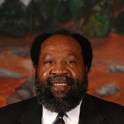Over the years, many researchers have proposed theoretical models of problem-solving. These models work a problem in a sequential and rational manner. Through our professional experience and an action research study, we discovered fundamental differences between what these models describe and what actually happens when problems are solved in a real-world setting. Assisting with a process improvement experience in a plastics company, we discovered that when a problem is properly identified, problem-solving generally follows the theoretical models. However, when a problem is difficult to identify, problem-solving proceeds in a cyclical and apparently irrational manner. Cyclical problem-solving increases the average time of problem-solving and production cost. The authors find that the relationships among the problem-solving steps are much more complex than implied in existing literature. Incorporating this new understanding into process improvement training reduced the variability of the problem-solving time from 44 to 21 min.
Available at: http://works.bepress.com/jim_herbert/4/
